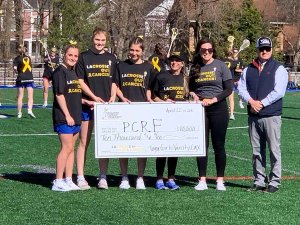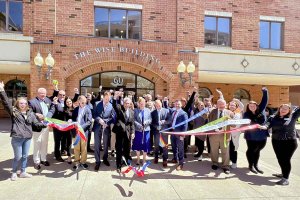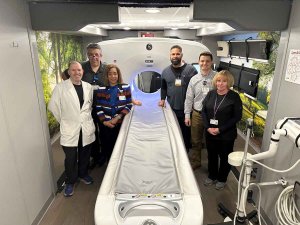Each month the physical therapists at my office and I are writing articles to post on our websites and to feature in Saratoga Today. For several months now I have been learning how best to deal with the spectrum of tendon related concerns. This includes treating acute tendon injuries, to maximize the performance of the tendon and an athlete’s explosiveness and improving the resilience of the tendons to ensure continued injury-free participation in adult fitness. So today I am writing about “tendon health.”
A tendon is defined as, “a flexible but tough band of fibrous connective tissue that connects muscle to bone and is capable of withstanding tension.” Often you will hear people talking about having things like:
•Tendonitis: acute inflammation of a tendon
•Tendinosis: chronic persistent or recurring condition involving deterioration of collagen
•Tendinopathy: the degeneration of the collagen protein that forms the tendon
There are also people that have been told they have a “torn” tendon and some a “ruptured” tendon. These are really the same issue and what is more important is the extent of the injury. (i.e. how big the tear is).
Luckily, tendons are incredibly resilient so although some ruptures/tears need to be surgically repaired there are a large percentage that don’t need surgery. Most people with tendon injuries can get help from a physical therapist to learn how to build the tendon’s strength and minimize the likelihood of further injury.
One of the biggest mistakes people make when injuring their tendon is “complete” rest. I know I was trained to rest injuries when I first started over 20 years ago, but now we know better. Specifically, regarding tendons, we know that stopping all activity is counterproductive and may even make us susceptible to more injury. Although there are definitely some activities that should be avoided, a healthy, resilient tendon requires the tendon to be used. Avoiding all activity and avoiding all exercise is NOT the most effective way to deal with a tendon injury.
Here are the areas to avoid when trying to resolve an injured or irritated tendon.
1. Avoid fast movements (i.e. running, jumping, throwing, etc)
2. Avoid compressive movements of the tendon (i.e. when the tendon is pushed up against the bone like deep end range movements)
3. Avoid repetitive movements (i.e. long walks, using a mouse)
4. Avoid “Complete Rest!!!” Focus instead on “active recovery.” (i.e. do everything that doesn’t bother the tendon. Typically not all movements hurt, so they are safe to do)
5. Avoid prolonged stretching. Focus instead on getting the muscle mobile with manual therapy or things like foam rolling.
The best ways to keep tendons strong are to use them and specifically load them (i.e. lift weights). To strengthen the tendon it is important to progressively load the tendon. Here are the types of loading in order of priority regarding tendon health:
1. Start with Isometrics. Isometrics are a type of strength training in which the joint angle and muscle length does not change during contraction. This is a way to load the tendon without provoking it. Remember that tendons do not need complete rest!
I recommend working up to holding an isometric contraction for 30 seconds. It turns out that 30 seconds is the most productive time frame according to some researchers. In addition, I recommend 3 sets of 30 seconds twice a day.
2. Eccentric comes next. An eccentric contraction is a contraction that lengthens the muscle while under load. I recommend exercising 3-5 sets of 12-15 repetitions focusing on controlling the movement while the tendon is lengthening. These types of exercises can be done 3-5 times per week.
This is an important step to focus on for tendon health and is often used to increase the resiliency of the tendon. Early in the transition from isometric to eccentrics I recommend starting to perform eccentrics in conjunction with isometrics. Meaning start by holding an isometric contraction for 30 seconds and then deliberately release the position while the muscle is still contracting. As your strength improves the transition to more repetitions as outlined above.
3. Next, work on concentric movements. A concentric exercise is a contraction that shortens a muscle. This means taking the tendon through the full range of motion under tension. I recommend combining this with an eccentric contraction and deliberately releasing the position as the tendon returns to the starting position.
4. Finally, dynamic movements. This means deliberately challenging the tendon with all the conditions it may face including fast movements, repetitive movements. This would include sports and fitness classes.
Optimal tendon health includes recovering from an injury, prevention of injury and sports/fitness performance enhancement. With an injury, we are often working to re-establish the strength of the muscle-tendon complex, so if we are trying to prevent injuries we need to include building the muscle to allow the system to tolerate more. Preventing injury means having a strong muscle base, which means lifting weights (specifically lifting heavy weights). Lifting heavy weights helps create a foundation for the tendon to handle more explosive movements. This is one reason why progressing the load on the muscle is so valuable. If the muscle is not getting progressively stronger, then the tendon is more susceptible to injury.
Tendons play a major role in athletics and sports performance. For example, exceptional athletes often have tendons that are stiffer. The stiffer the tendon, the more explosive the athlete. The more explosive the athlete, the faster they run and the higher they jump. Tendon stiffness will also help to improve throwing a ball and swinging a racquet or golf club.
A form of exercise called plyometrics is often incorporated to achieve the greatest results by improving the stiffness of the tendon. Plyometrics are defined as: exercises involving repeated rapid stretching and contracting of muscles (as by jumping and rebounding) to increase muscle power.
A balance must be achieved when we get into more challenging activities like plyometrics. The intention is to improve explosiveness which means doing an appropriate amount of exercises. Explosive movements are meant to be near maximum effort. For optimal results, it is important to limit the duration of plyometrics. If the athlete is asked to do plyometrics for too long they are likely to suffer from overuse type injuries. There are times the athlete is improving despite the program, not because of the program. This is why understanding where the individual is in their training is crucial to the success of the program.
Whether the goals are rehabilitation or improved explosiveness in sports/fitness, the progression is similar. Start with a strong foundation of muscle/tendon strength by gradually progressing the load through the system. Programming the proper exercises for optimal results is dependent on the individual and the specific goal. It is very important to understand the clues the body is giving regarding the training because although the intention is to improve the tendon’s health, too much training can be the very thing that causes injury. This is where guidance is recommended.
If you have any questions please contact me at This email address is being protected from spambots. You need JavaScript enabled to view it. or call 518-306-6894 to set up an appointment.






























 How to resolve AdBlock issue?
How to resolve AdBlock issue? 









